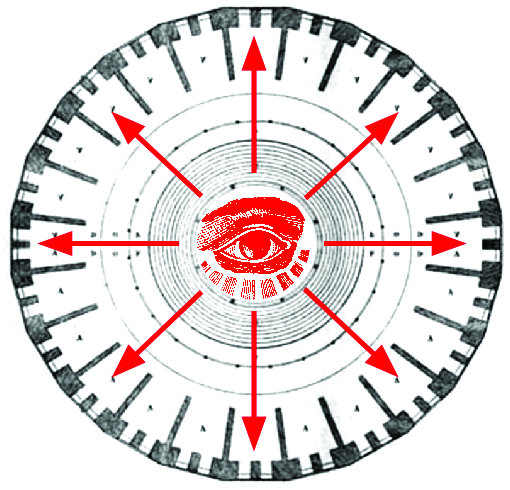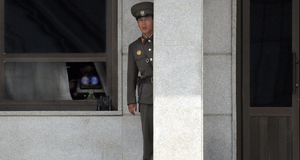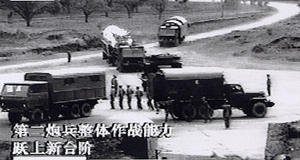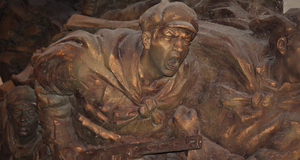Featured Article:An Explanation of Self-Censorship in China: The Enforcement of Social Control Through a Panoptic Infrastructure
By
2015, Vol. 7 No. 09 | pg. 1/5 | »
IN THIS ARTICLE
KEYWORDS
AbstractIn contemporary China, as a result of centuries of censorship, major dissent at the domestic level has become rather rare. This research paper examines the mechanics of censorship in China. It will explore the evolution of censorship over time as well as the specifics of how the Chinese government manages to censor its citizens on the Internet and in the media. Scholars have generally accredited the success of the government’s endeavors to the infrastructure that is used for censorship as well as the hierarchical control that the government exercises. However, I will argue that these explanations are not sufficient in explaining the status quo in China. China’s situation, and specifically, the docility and self-censoring tendencies of Chinese citizens, is more effectively explained by Michel Foucault’s analysis on the discourse of the mechanisms of power and social control. Throughout history, the Chinese government has controlled the ability of its citizens to communicate both domestically and with the outside world. Today, China utilizes some of the most sophisticated forms of technology to censor its citizens from what the government deems as potentially undesirable, and thus unwanted information. It is able to do so because it retains absolute power and dominance over virtually all forms of ideological communication in China. This poses a significant obstacle to collective dissent. As a result of Internet and media censorship, citizens have fundamentally become docile figures of society. This paper will focus on a unique aspect of censorship in China: the self-censoring tendencies of its citizens. On an everyday basis, it appears that many Chinese citizens are censoring themselves even without the imminent threat of force. On the Internet, they are hesitant to contradict and undermine the overarching ideology of the government. Not only that, fear of being cited for serious charges revolving around stirring domestic insurrection, plus the fact that individuals need to register for a license in order to organize protests, considerably mitigates the quantity and quality of social demonstrations. Privately and publically owned multimedia corporations will not produce content that the government considers unfavorable. Public firms are overseen and operated by the government itself, and private firms refrain from contradicting the government since their survival is dependent on not getting their operating licenses revoked. In the contemporary digital age, self-censorship has evolved to become rather pervasive.A visualization of Foucault's theory of panopticism. Image: Jesse Honsa. Prior to analyzing the discourse of censorship, it is necessary to establish an objective definition of self-censorship in regards to China. Oxford Dictionaries defines self-censorship as “[t]he exercising of control over what one says and does, especially to avoid castigation.”1 On the Internet, most individuals in China appear to self-monitor their online activities, namely forum and social media posts. In the media, virtually all figures in the industry self-monitor the content that they produce. This is done for reasons such as to avoid clash with authorities. Generally speaking, censorship is utilized to suppress an entity’s ability to access certain material. Self-censorship, on the other hand, describes individuals willingly censoring themselves. This research paper will examine the phenomenon of self-censorship by first exploring the historic context of censorship in China and contrasting it with the present situation. It will then examine competing social and political theories that seek to explain notions of censorship, collective docility, and self-censorship. Although there has been a significant amount of scholarly research conducted on the more practical aspects of censorship, this paper will apply a post-structuralist analysis of power and normative social control to explain the current phenomenon in China. I will argue that the tendency to merely accredit the success of censorship in China to the structure of the system drastically oversimplifies the roles of cognition and normative action in the overall process. Further, I will put forth that Michel Foucault’s post-structuralist analysis on the discourse of mechanisms of power and social control provides a better explanation of the docility and self-censoring tendencies of disciplined Chinese citizens. The Evolution of Censorship in ChinaCensorship in the 20th CenturyIn order to understand the context of modern day censorship, it is necessarily to ponder its historical evolution. The practices of censorship in China date all the way back to the Qin and Han dynasties around 200 BC — 200 AD, which marked the start of the imperial era. During that time, the absolute power that emperors possessed, including a monopoly on the legitimate use of violence, allowed them to silence individuals who spoke out against the emperor and the state.2 Scholars were prohibited from producing literature that would undermine the empire and emperor. By citing grave charges like treason, individuals who committed such crimes often faced serious sentences such as public execution. This served to deter a significant amount of political opposition.3 The most radical changes in censorship occurred after Mao Zedong and the Communist Party assumed control in China after defeating Chiang Kai-shek and the Nationalist Party in a bloody civil war in 1949. Immediately after obtaining power, under Mao’s leadership, the CPC, persecuted supporters of Chiang and other Nationalists who had not yet fled to the Republic of China on Taiwan (ROC). More importantly, the CPC launched massive propaganda campaigns in attempts to glorify Mao and to rally support for the new leadership. The central theme of the campaigns, and arguably the main theme all of subsequent propaganda campaigns by the CPC, was to stimulate patriotism. The Chinese characters for patriotism are (ai guo), which directly translates to love country. This notion of patriotism played an enormous, indirect role in censorship during the mid 20th century. Patriotism gave censorship a positive connotation. For example, in the 1950s it justified the persecution and silencing of Nationalism and Nationalist rhetoric. Propaganda helped convince Chinese citizens that those who contradicted the overarching ideology of the Communist Party were unpatriotic and did not love the country (ai guo). In other words, deviants were traitors, and traitors deserved to be persecuted, punished, and censored. The empirical themes found in patriotic propaganda set the precedent for justifying censorship throughout much of the 20th century movements.4 During the Anti-Rightest Movement (1949-1976), the government launched various propaganda campaigns to eradicate pro-capitalist and rightist ideology in China. It all started when Mao launched the Hundred Flowers Campaign in 1956, which encouraged an unprecedented discourse on public governmental criticism. According to Harry Wu, a dissident at the time and author of Troublemaker: One Man's Crusade Against China's Cruelty, Mao’s policy of “letting a hundred flowers bloom and a hundred schools of thought contend is designed to promote the flourishing of the arts and the progress of science.”5 Ironically, in 1957, merely a year later, the CPC started persecuting intellectuals who spoke out against the CPC and in favor of capitalism. Scholars have argued that this was Mao’s ploy to eliminate rising rightists such as Zhang Bojun, Luo Longji, and Peng Dehuai. The China Media Project at the University of Hong Kong estimates that around 550,000 citizens were persecuted at the time for their ties to rightist politics.6 In 1958, during the midst of the Anti-Rightest Movement, Mao initiated the Great Leap Forward, a five-year economic plan to progress China’s economy. Mao aspired to transform the formerly agrarian Chinese economy into a socialist-driven model by means of rapid collectivization and industrialization. Practices such as private farming were banned, and violators were persecuted as counter-revolutionaries. Though there was massive starvation due to the long hours and consistent malnourishment, citizens who criticized the system, including those who sought to undermine the PRC’s endeavors, were persecuted. As the overall death toll began to rise, it became clear that the Great Leap Forward was failing. In 1959, Peng Dehuai, the PRC’s defense minister during the mid 20th century, passively expressed his grievances toward Mao and the PRC during the Lushan Conference for the economic devastation that the Great Leap Forward had incited.7 Consequently, he was pronounced a rightist, dismissed, arrested, and replaced by a loyal PRC member.8 Not only did the Anti-Rightest Movement showcase Mao’s absolute power and control in China, on a more fundamental level, it also displayed the PRC’s sensitivity in regards to critique. This would set the precedent for the government’s reaction to discourse of this nature following the Lushan Conference. Today, all rhetoric relating to the Anti-Rightest Movement is banned in China. Another shaping historical event that occurred during this era was the Tibetan Uprising in 1959. Tibet has been under the formal control of the PRC since the signing of the Seventeen Point Agreement in 1951. Since then, there has been much conflict between the indigenous population and the Chinese government. Since Tibet was under the rule of China, Tibetans were also subject to the socialist reform policies outlined under the Great Leap Forward plan. This, along with the constant tension between Tibetan rebels who wanted independence and the government, eventually exploded into conflict. Unsurprisingly, the heavily armed Chinese government won most of the skirmishes and battles.9 Tibet.org reports that during this period alone, over 86,000 Tibetans were brutally killed by the Chinese government as a result of their revolutionary endeavors.10 Into the 21st century, the conflict and overall tension between the indigenous Tibetan population that have been fighting for independence and the Chinese government remain high as the CPC remains unyielding. Virtually all material related to China’s militaristic actions toward Tibet is censored. The government’s endeavor to hide its historical wrongdoings through censorship is an important theme that will be revisited later in this section. The Cultural Revolution (1966-76) was arguably one of the most important eras in Chinese history. The CPC’s official Decision Concerning The Great Proletarian Cultural Revolution attempts to justify the Revolution: “Although the bourgeoisie has been overthrown, it is still trying to use the old ideas, culture, customs and habits of the exploiting classes to corrupt the masses, capture their minds and endeavour to stage a comeback...At present, our objective is to struggle against and overthrow those persons in authority who are taking the capitalist road, to criticize and repudiate the reactionary bourgeois academic 'authorities' and the ideology of the bourgeoisie and all other exploiting classes and to transform education, literature and art and all other parts of the superstructure not in correspondence with the socialist economic base, so as to facilitate the consolidation and development of the socialist system.”11 The Cultural Revolution was in many ways similar to the Anti-Rightest Movement in regards to the strategies utilized to eradicate bourgeoisie ideology from society. However, in the midst of persecution, propaganda campaigns firmly established Mao’s dominance in China. Propaganda during this era would, to this date, leave a lasting footprint on Chinese ideology. During the Cultural Revolution, Mao’s personality cult would assume a firm hegemonic position.12 In addition to eliminating all that remained of the bourgeoisie, another primary goal of the Cultural Revolution at the time was to eliminate what was known as the Four Olds: Old Customs, Old Habits, Old Culture, and Old Ideas. The CPC alleged that the presence of these four traditional elements served to not only hinder social progress, but also undermine Communist ideology by corrupting the masses. Thus, they must be eradicated at all costs. As a result of massive propaganda campaigns, citizens glorified the revolution and showed unwavering support toward virtually all Maoist ideas, censorship, and even ideological persecution. At the time, censorship focused heavily on mediums such as television, radio, and newspaper. On a collective level, if any of those media outlets produced content that deviated from the dominant ideology of the government or touched on sensitive topics, punishment would inevitably follow.13 However, this was not a serious problem during this time because almost all media organs were owned and controlled by the government. Going back to the Four Olds, a large number of Red Guards that served as the CPC’s patrol agents were stationed all around China. The power of these CPC-backed Red Guards was largely unchecked as they attempted to persecute and censor all counterrevolutionary discourse. Consequently, it allowed them to harass, imprison, and torture whomever they deemed to be traitors at their discretion. According to Myers, later governmental documents revealed that over 2,600 literary critics and artists, 142,000 teachers, 53,000 scientists and technicians, and more were persecuted during the Cultural Revolution.14 As a result, many of these intellectuals died. Even though the Cultural Revolution formally ended in 1976 with the death of Mao, the government continued practicing censorship and persecuting radicals. A key event in the post-Mao era was the Tiananmen Square Massacre of 1989 in Beijing, China. According to The National Security Archive, protests for democracy in Beijing, and specifically, at Tiananmen Square date all the way back to 1985. However, the scale of the 1989 Tiananmen Square Protests was unprecedented. Primary source cables from the United States Embassy in Beijing document that government tanks and soldiers armed with automatic weapons started firing at student-led protesters on June 4, 1989, killing an estimated 2,000 people.15 Since 1989, on every anniversary of the Tiananmen Square Massacre, China tightens its media and Internet censorship in order to prevent discussion of the atrocity.16 Even though some are aware of it, Chinese citizens are generally hesitant to speak of the event because of the grave sanctions against the topic. Similar to the Tibetan Uprising, discussion of Tiananmen Square has also evolved to become socially tabooed in China. Tibet and Tiananmen Square serve as living examples of the CPC using censorship to artificially erase history, hide some of the heinous crimes that it has committed, and, arguably, deceive its citizens into thinking that everything that it does is for the betterment of society. Although it may be hard to imagine today, in the eyes of patriotic Chinese citizens who possessed the ai guo mentality during most of the 20th century, government censorship did not always carry the negative connotations that non-governmental organizations (NGOs) such as Human Rights Watch attribute it today. Censorship, propaganda campaigns, and the use of violence were arguably considered legitimate political instruments used by the government in promoting the general welfare of the state. A lot of citizens would grow to accept this. Even as the 21st century approached, and as China started receiving a barrage of international criticism for its censorship policies, it persisted in its endeavors. Censorship in the Digital AgeAs the Internet became an increasingly prominent domain for communication and accessing information, the government in China became well aware that censorship was vital to limiting online political dissent. It has since launched developmental projects such as the Golden Shield Project (also known as the Great Firewall) in 2000 to increase network security. According to Greg Walton, the Great Firewall was “launched to promote advanced information and communication technology to strengthen central police control, responsiveness, and combating capacity, so as to improve the efficiency and effectiveness of police work.”17 The government has utilized it to block an array of websites that transmit information on topics that the government considers sensitive, such as democracy and pornography. Moreover, websites that the government considers controversial such as Facebook, Twitter, Google, and YouTube are also blocked. Not only does the Great Firewall censor potential sources of unwanted information, simultaneously, it also allows the government to monitor and survey the actions of web users.18 Although proxy servers and virtual private networks (VPNs) do enable citizens to bypass the Great Firewall and find the information that they are looking for, Fallows argues that “[b]y making the search for external information a nuisance, they drive Chinese people back to an environment in which familiar tools of social control come into play.”19 Those who do bother trying have a high tendency of attracting government authorities’ attention, especially if they are trying to congregate dissidents. Thus, Chinese citizens generally do not seek information on banned topics such as Tiananmen Square and democracy, nor do they actively seek to undermine the integrity of the government. In addition to the Great Firewall, The New York Times recently reported that China has devised what is known as the Great Cannon, a tool that can be used for both censorship and surveillance. The device essentially allows the government to intercept and redirect a large amount of web traffic, including traffic coming from a foreign server, to a website or server of its choosing. Perlroth explains: “...researchers’ fear is that the state could use its new weapon to attack Internet users, particularly dissidents, without their knowledge. If they make a single request to a server inside China or even visit a non-Chinese website that contains an ad from a Chinese server, the Great Cannon could infect their web communications and those of everyone they communicate with and spy on them.”20 The Great Cannon becomes yet another powerful tool in the government’s arsenal of weapons to enforce censorship and surveillance, an important theme that will be revisited later. Although the censorship system is rather effective and efficient at blocking content, the minority of the population that is interested in seeking blocked information normally utilize VPNs and proxy networks to circumvent the system. VPNs essentially enable users to connect to the Internet through international servers, which are beyond the jurisdiction of the Chinese government. Proxy networks also allow users to mask their origin by connecting their computer to another computer outside of China. However, they are not used as often as VPNs because proxy servers tend to be rather slow. VPNs and proxy servers are not designed to serve a massive amount of requests simultaneously, which limits their ability to potentially round up dissidents. Though these are viable methods in bypassing the Great Firewall, the government has started cracking down on popular VPNs and proxy servers that netizens (citizens who use the Internet) use. As simple of a fix as these solutions may appear, it is just as easy for the government to locate and block citizens’ abilities to access VPNs and proxy servers, especially the more popular ones. In January 2015, BBC reported that China had blocked two of the most popular VPNs in the country: StrongVPN and Golden Frog.21 In addition to the Internet, China’s media is also heavily censored. The structure of the Chinese constitution gives the government discretion to act as it wishes in order to promote domestic security. Reporters without Borders considers China one of the worst countries with regards to press freedom.22 Journalists are constantly harassed and punished by the government for reporting on sensitive issues. Media conglomerates are also in the same boat. Telecommunication networks in China operate under the jurisdiction of the government. The government controls public television stations such as Central Chinese Television (CCTV). Although it does not directly control the operations of private media corporations in China, the government still exercises an indirect sense of jurisdiction and leverage over them. As a result of this, controversial current events and news stories, as well as other stories that may undermine the CPC, are not normally broadcasted.23 Even if media companies initially broadcast them, as soon as a government order is issued and trickled down upon the ranks, companies have no other option but to immediately delete the controversial content. Below is an example of a government order that was leaked to BBC: 17 June 2006, 18:35 Politically, China’s contemporary state is characterized by a rather limited amount of collective dissent. On the Internet, although netizens technically have access to VPNs, the government has been rather keen with regards to cracking down and punishing dissidents, which considerably deters radicalism. Even though stories that the government does not favor do occasionally go mainstream, on a fundamental level, private media corporations and reporters are unwilling and unable to challenge the authority of the central government. Thus, when the central government issues official memos banning the reporting of certain topics, media companies will unequivocally oblige. This is not to say that censorship in China is absolute because individual, minor cases of dissent do exist on an everyday basis. However, whenever these cases do arise, the government is, and has been rather effective in identifying, undermining, and suppressing them using various techniques that will be examined in a later section of this paper. The evidence thus far points to the notion that as a result of decades of Internet and media censorship, in the status quo, citizens have gradually begun censoring themselves. Now that the basic foundation of censorship in China has been established, the task at hand is to ponder the empirical question: to what do we attribute the success of the government’s ability to induce self-censorship amongst citizens?Continued on Next Page » Suggested Reading from Inquiries Journal
Inquiries Journal provides undergraduate and graduate students around the world a platform for the wide dissemination of academic work over a range of core disciplines. Representing the work of students from hundreds of institutions around the globe, Inquiries Journal's large database of academic articles is completely free. Learn more | Blog | Submit Latest in Political Science |



















